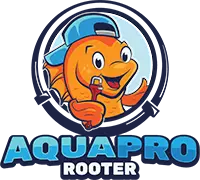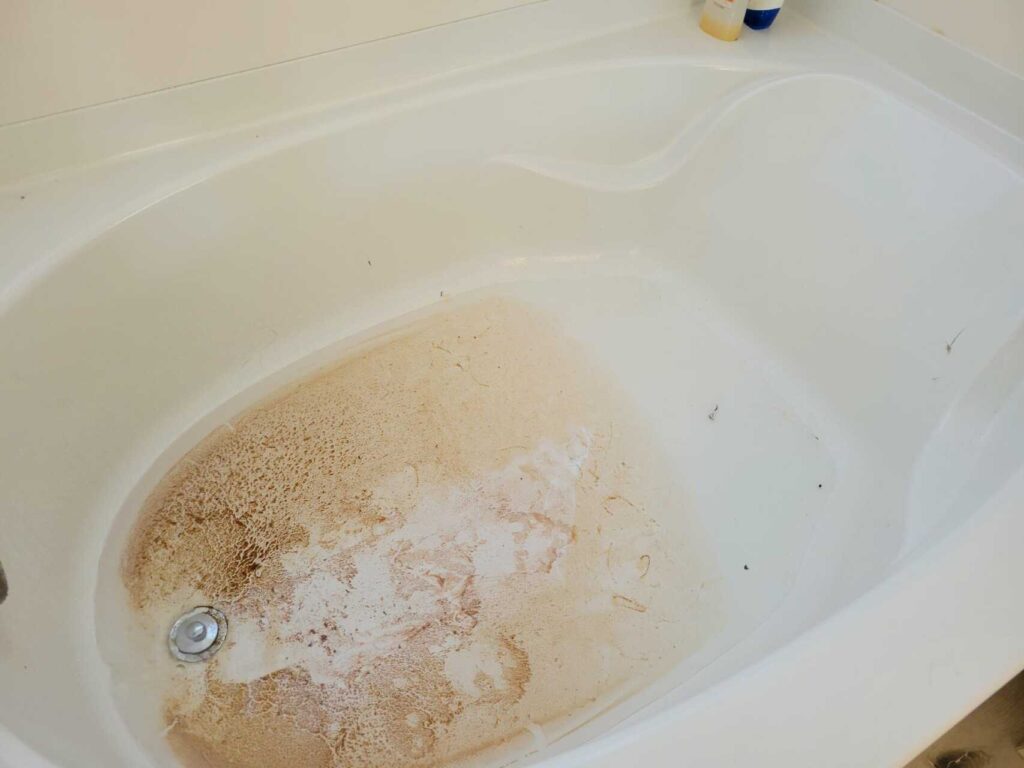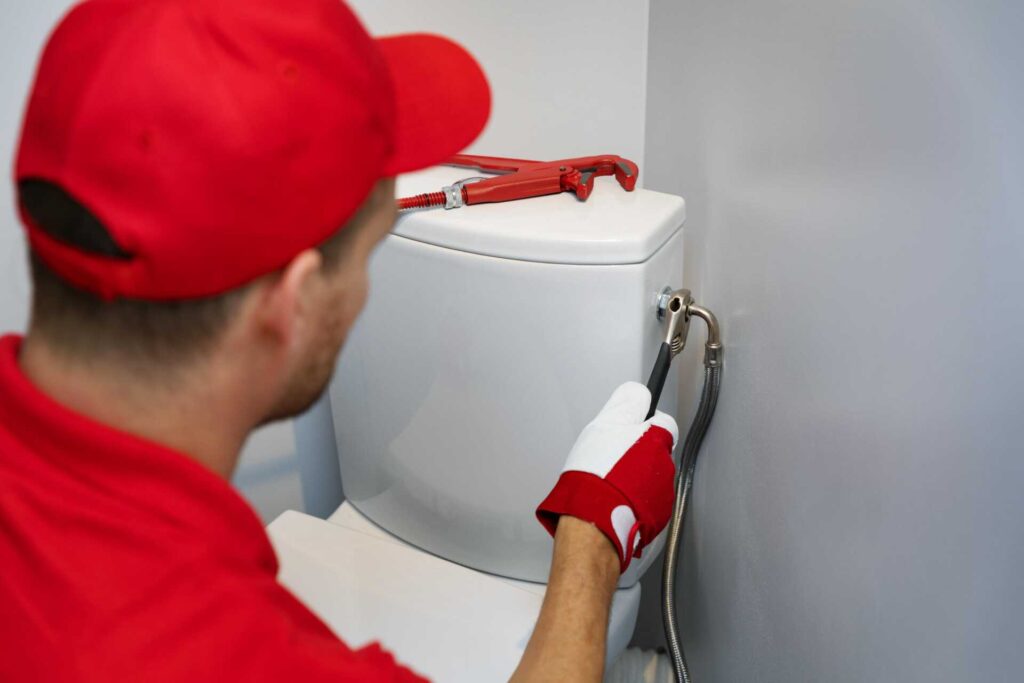
Contents
Understanding hydro jetting can be vital for effective sewer line repair, especially if you’re facing recurring problems. You’ll want to explore the essential tips that can save you time and money, but first, it’s important to grasp the basics and assess your specific situation. Let’s uncover what you need to know before diving into the process.
Key Takeaways
- Begin with a thorough inspection using a camera to identify blockages and assess pipe conditions before hydro jetting.
- Select the appropriate hydro jetting nozzle based on the type of blockage and pipe material to ensure effective cleaning.
- Adjust the pressure settings gradually, starting with moderate pressure to avoid damaging older or fragile pipes during the jetting process.
- Schedule hydro jetting every 1-2 years as part of routine maintenance to prevent clogs and extend the life of your sewer lines.
- Always wear personal protective equipment (PPE) including gloves, goggles, and protective clothing to safeguard against injuries during the hydro jetting process.
Understand Hydro Jetting Basics
Hydro jetting is a powerful technique for cleaning sewer lines and addressing clogs. By utilizing high-pressure water streams, this method effectively clears blockages, ensuring your sewer system functions efficiently. You might have heard about the hydro jetting advantages, such as its ability to remove stubborn debris, grease, and tree roots, which traditional methods often struggle with. This technique clears existing obstructions and helps prevent future clogs, making it a proactive solution for maintaining your plumbing.
However, there are some common misconceptions surrounding hydro jetting. Many people believe it can damage pipes, especially older ones. In reality, when performed by trained professionals, hydro jetting is safe for most types of pipes. It’s essential to acknowledge that a thorough assessment of your plumbing system is vital before proceeding with this method, as certain conditions may require alternative solutions.
You might be wondering if hydro jetting is suitable for your home. If you’re experiencing frequent clogs or slow drainage, this approach could be the answer you’re looking for. It’s a cost-effective way to extend the lifespan of your sewer lines and improve overall plumbing performance. By understanding the basics of hydro jetting and recognizing its advantages, you can make informed decisions about your plumbing needs. Embracing this method can provide you with peace of mind, knowing your system is clear and functioning effectively.
Assessing Pipe Condition
To effectively assess pipe condition, you should start with visual inspection techniques to identify any visible damage or corrosion. Consider the pipe material, as different materials can affect durability and susceptibility to blockages. Pinpointing the sources of any blockages will help you determine the best approach for hydro jetting.
Visual Inspection Techniques
While evaluating the condition of sewer pipes, employing effective visual inspection techniques is crucial for identifying potential issues. One of the most reliable methods is camera inspection. By using a high-resolution camera attached to a flexible cable, you can capture real-time footage of the pipe’s interior. This allows you to thoroughly assess the pipe’s condition without intrusive excavation.
During a visual assessment, pay close attention to signs of damage such as cracks, corrosion, or blockages. The camera’s footage will help you spot root intrusions, grease buildup, and other obstructions. It’s essential to document these findings, as they inform your repair strategy and prioritize hydro jetting efforts.
Additionally, consider the angle and lighting during the inspection. Proper illumination guarantees that you can clearly see the pipe’s condition, enhancing your ability to make informed decisions.
Pipe Material Considerations
Understanding the type of material your sewer pipes are made from is essential for evaluating their condition and determining the best repair methods. Different materials respond uniquely to wear and tear, which affects their longevity and the effectiveness of hydro jetting.
Here are some key considerations for popular pipe materials:
Cast Iron: This material can last a long time, but may corrode over the years. Inspect for rust or cracks, as these issues can worsen during hydro jetting.
PVC: Known for its durability, PVC offers excellent longevity. However, check for signs of brittleness or damage, as high-pressure water can exacerbate any weaknesses.
Clay: While clay pipes resist corrosion, they can be prone to cracking. Look for signs of displacement or breaks that could complicate repairs.
Copper: Although less common, copper can corrode over time. Confirm there are no leaks or pinholes before proceeding with any repairs.
Identifying Blockage Sources
After evaluating the pipe material, the next step is identifying blockage sources that could impede flow and lead to costly repairs. Start by observing the blockage symptoms, such as slow drainage, gurgling sounds, or unpleasant odors. These signs often indicate that something’s obstructing the sewer line.
Common culprits include grease buildup, tree roots, or foreign objects lodged in the pipes. Grease can accumulate over time, especially in older lines, leading to significant blockages. Tree roots, seeking moisture, can infiltrate and expand within the pipes, creating severe obstructions. Foreign objects, like wipes or toys, can cause immediate and severe blockage.
To assess the pipe condition, consider using a video inspection. This allows you to pinpoint the exact location and nature of the blockage without invasive digging. By understanding the source, you can implement the right hydro jetting methods to clear the line effectively.
Choosing the Right Equipment
When you’re preparing for hydro jetting, selecting the right equipment is vital to guarantee effective sewer line repair. The effectiveness of your hydro jetting operation largely depends on choosing the right equipment types and setting the appropriate pressure. Here are some key items to reflect on:
Hydro Jetting Machine: Choose a machine that’s suitable for your specific needs. Look for units that allow you to adjust pressure settings to match different pipe conditions and blockages.
Nozzles: The right nozzle can make a significant difference. Different nozzle types are designed to tackle various blockages—some are better for cutting through roots, while others focus on breaking up grease.
Hoses: Use high-quality hoses that can withstand the pressure necessary for effective cleaning. A durable hose guarantees safety and efficiency throughout the operation.
Safety Gear: Although this topic won’t explore safety precautions, having the right gear is imperative. Make sure you have gloves, goggles, and protective clothing to safeguard yourself while operating equipment.
Safety Precautions to Follow
When you’re hydro jetting, wearing the right personal protective equipment (PPE) is essential to prevent injuries. Make certain your work area is clear and secure to avoid accidents while operating the equipment. Following these safety precautions will help you work efficiently and minimize risks.
Personal Protective Equipment
While hydro jetting can effectively clear stubborn blockages in sewer lines, it is crucial to prioritize safety by wearing appropriate personal protective equipment (PPE). Using the right safety gear protects you from potential hazards and boosts your confidence while working.
Here are four essential items to include in your PPE:
- Protective Clothing: Wear durable coveralls or overalls made of waterproof material to shield your skin from debris and hazardous substances.
- Safety Goggles: Protect your eyes from high-pressure water spray and flying particles by using well-fitted goggles that provide a secure seal.
- Gloves: Use heavy-duty, waterproof gloves to guard your hands against cuts, abrasions, and exposure to harmful chemicals.
- Safety Boots: Invest in steel-toed safety boots with slip-resistant soles to protect your feet and provide stability on slippery surfaces.
Work Area Safety
To guarantee a safe working environment during hydro jetting, it’s essential to assess the work area thoroughly before starting. Begin with worksite organization; verify that tools, equipment, and materials are neatly arranged to prevent tripping hazards. Clearly mark the work area to keep unauthorized personnel at a safe distance.
Next, focus on hazard identification. Look for potential dangers such as nearby utilities, unstable surfaces, or environmental hazards like wet conditions. If you spot any hazards, take immediate action to mitigate them, whether that’s rerouting equipment or reinforcing unstable ground.
Make certain you have proper lighting in the area to enhance visibility, especially in low-light conditions. Also, double-check your equipment for any signs of wear or malfunction before use.
Communicate with your team about safety protocols and establish a clear plan for emergencies. Assign roles to guarantee everyone knows what to do in case of an incident.
Preparing Your Drain
Before you begin the hydro jetting process, it’s essential to prepare your drain properly to guarantee effective cleaning and prevent potential damage. Proper preparation enhances the efficiency of your drain cleaning and contributes considerably to your plumbing maintenance routine. Here’s how to get started:
Clear the Area: Remove any furniture or obstacles around the drain access point. This guarantees you have enough space to work safely and effectively.
Inspect the Drain: Check for visible signs of damage, such as cracks or sagging pipes. If you spot any issues, it’s best to address them before hydro jetting to avoid exacerbating the problem.
Locate Access Points: Identify all access points to your sewer line, such as cleanouts or inspection ports. Knowing where to connect the hydro jetting equipment will streamline the process.
Turn Off Water Supply: Before you start, make sure to turn off the water supply to prevent any unwanted flooding during the jetting process. This precaution will also help maintain pressure in the lines.
Effective Techniques for Jetting
Understanding effective techniques for hydro jetting is important for maximizing the cleaning potential of your sewer line. One of the most significant aspects is your choice of jetting techniques. Depending on the type of blockage and the condition of your pipes, you may need to adjust your approach. For instance, a high-pressure jet can efficiently remove grease and sludge, while a rotating nozzle can break apart stubborn roots.
Nozzle selection plays an essential role in achieving ideal results. Different nozzles are designed for specific tasks; for example, a fan nozzle is excellent for general cleaning, while a penetrator nozzle is ideal for tough clogs. You should assess your sewer system to determine which nozzle will best suit your needs.
Moreover, adjusting the pressure settings is crucial. Too much pressure can damage older pipes, while too little may not clear the blockage effectively. A good rule of thumb is to start with a moderate pressure and increase as needed, keeping an eye on how your pipes respond.
Finally, timing matters. It’s advisable to jet your sewer line during dry weather, as this can enhance the effectiveness of the process. By understanding these techniques and making informed decisions about nozzle selection and pressure, you can guarantee a thorough clean, extending the lifespan of your sewer line and preventing future issues. Embrace these strategies, and you’ll feel more confident in tackling sewer line maintenance.
Dealing With Severe Blockages
When facing severe blockages, it’s essential to identify the underlying causes, such as tree roots or grease buildup. Understanding the hydro jetting process can greatly aid in effectively clearing these obstructions. This knowledge will empower you to tackle even the toughest sewer line issues with confidence.
Identifying Blockage Causes
Identifying the causes of severe blockages in your sewer line is essential for effective hydro jetting and long-term maintenance. Understanding the underlying issues will help you tackle these problems head-on and prevent future occurrences. Here are some common blockage types you might encounter:
- Grease Buildup: Over time, grease can solidify and create substantial clogs in your pipes.
- Root Intrusion: Tree roots can penetrate sewer lines, causing significant blockages and damage.
- Debris Accumulation: Items like wipes, feminine products, and other non-flushable materials can accumulate and obstruct flow.
- Pipe Damage: Cracks or breaks in your pipes can lead to misalignment, creating blockages from displaced soil or debris.
Hydro Jetting Process Explained
Although you may face severe blockages in your sewer line, the hydro jetting process offers an effective solution to clear them. This method utilizes high-pressure water jets to dislodge and remove stubborn debris, restoring your sewer line efficiency.
Here’s a breakdown of the hydro jetting process:
| Step | Description |
|---|---|
| Inspection | A camera is used to assess the blockage. |
| Preparation | Necessary equipment is set up on-site. |
| Hydro Jetting | High-pressure water is directed into the line. |
| Post-Cleaning Check | Another inspection guarantees all debris is cleared. |
The benefits of hydro jetting extend beyond clearing blockages. It thoroughly cleans the pipes, allowing for smoother waste flow, and prevents future issues. You’ll notice an improvement in your sewer line’s efficiency, which can considerably reduce the risk of recurring blockages.
Post-Cleaning Inspection
After completing the hydro jetting process, it’s vital to conduct a thorough post-cleaning inspection to guarantee the sewer line is free from obstructions and damage. This post-cleaning assessment is significant for confirming the long-term health of your sewer system. By utilizing the right inspection tools, you can identify any potential issues that may arise after cleaning.
Here are four key steps to follow during your post-cleaning inspection:
Visual Inspection: Start with a thorough visual examination of the cleaned sewer line. Look for any remaining debris, cracks, or signs of wear that could indicate underlying problems.
Camera Inspection: Employ a high-resolution inspection camera to get a closer look at the interior of the pipes. This tool allows you to capture detailed images and videos, making it easier to pinpoint areas needing repair.
Check for Proper Flow: Confirm that water flows smoothly through the sewer line after cleaning. You can run water through the system to verify there are no blockages or slow drains.
Document Findings: Keep a record of your inspection results, noting any issues discovered and areas that may require future attention. This documentation will help track the sewer line’s condition over time.
Maintenance Tips for Longevity
Once the post-cleaning inspection confirms your sewer line is in good condition, implementing regular maintenance practices can greatly extend its lifespan. Regular maintenance is essential for preserving sewer health and preventing costly repairs. Start by scheduling annual inspections, where a professional can check for any early signs of wear or blockages. This proactive approach helps catch potential issues before they escalate.
In addition to inspections, consider adopting a routine cleaning schedule. Hydro jetting is an effective method for maintaining clear sewer lines, as it removes buildup and debris. Depending on your usage, aim for a hydro jetting session every 1 to 2 years.
Be mindful of what goes down your drains. Avoid flushing non-biodegradable items like wipes or grease, as these can lead to clogs and deteriorate your sewer system. Educate your household on proper disposal methods to help maintain sewer health.
You should also keep an eye on your landscaping. Tree roots are notorious for invading sewer lines, so monitor any nearby trees for growth. Consider root barriers or consult a professional for advice if you notice roots encroaching.
Lastly, stay informed about the materials and age of your sewer lines. Older systems may require more frequent maintenance. By integrating these practices into your routine, you can greatly enhance the longevity of your sewer line, ensuring a healthier home environment for years to come.
When to Call a Professional
When should you call a professional for sewer line issues? Knowing when to seek expert help is vital for maintaining your plumbing system and avoiding costly repairs down the line. Here are some key indicators that it’s time to consult a professional:
Frequent Clogs: If you’re experiencing recurring blockages, it might indicate a deeper issue in your sewer line. If not addressed promptly, frequent service can lead to higher cost considerations.
Unpleasant Odors: Foul smells emanating from your drains or yard can signal a break or leak in your sewer line. This issue requires immediate attention to prevent health hazards.
Slow Drains: If multiple drains in your home are slow, it suggests a significant clog or blockage. While occasional slow drains are common, consistent problems indicate the need for professional intervention.
Wet Spots or Sinkholes: Unexplained wet areas in your yard or sinkholes can indicate a leaking sewer line. This situation can escalate quickly, so it’s imperative to act fast.
Understanding service frequency is essential for maintaining your sewer line’s health. Regular inspections and hydro jetting can prevent many issues, saving you money in the long run. These indicators will help you determine when to involve a professional, ensuring your plumbing system runs smoothly and efficiently. Don’t wait until a minor problem becomes a major headache—reach out for help when necessary.
Summary
Mastering hydro jetting can transform murky, clogged pipes into clear channels, restoring the flow like a rejuvenated river. You ensure a successful repair by understanding the basics, evaluating conditions, and following safety protocols. Regular maintenance acts as a safeguard against future blockages, keeping your sewer system running smoothly. When in doubt, don’t hesitate to call in professionals—after all, a clear path is essential for a healthy home. Embrace the power of hydro jetting for lasting peace of mind.



